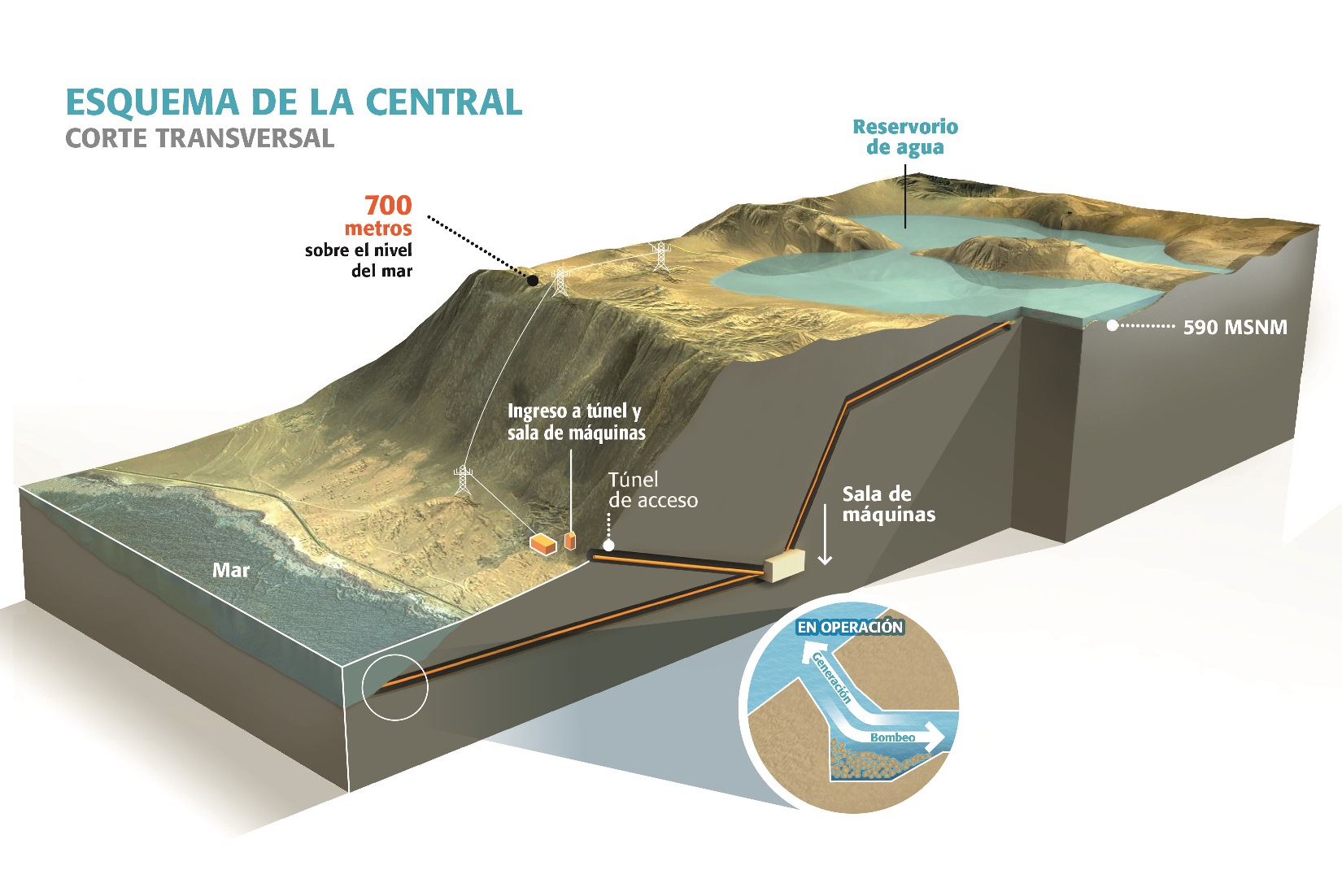 I’ve been saying this many times: the competition is not between solar thermal electricity (STE, or CSP: concentrating solar power) and photovoltaics (PV), but between STE and PV+storage, mostly PV+pumped storage plants (PSP, or PSH: pumped storage hydropower). But I was not expecting to witness this in North Chile – one of the dryest places on earth, one of the best for CSP but not really good for hydropower. This was without taking account of the possibility of Okinawa-style, seawater PSP. The Espejo de Tarapacá project developed by Valhalla Energy, associating a large seawater PSP of 300 MW with 600 MW of PV plants, would represent a significant challenge for STE. It remains to be seen, however, how the economics work, and in particular if the lowest cost of PV makes a difference large enough to compensate for the losses in PSP, significantly greater than in thermal storage. But this might well be the case.
I’ve been saying this many times: the competition is not between solar thermal electricity (STE, or CSP: concentrating solar power) and photovoltaics (PV), but between STE and PV+storage, mostly PV+pumped storage plants (PSP, or PSH: pumped storage hydropower). But I was not expecting to witness this in North Chile – one of the dryest places on earth, one of the best for CSP but not really good for hydropower. This was without taking account of the possibility of Okinawa-style, seawater PSP. The Espejo de Tarapacá project developed by Valhalla Energy, associating a large seawater PSP of 300 MW with 600 MW of PV plants, would represent a significant challenge for STE. It remains to be seen, however, how the economics work, and in particular if the lowest cost of PV makes a difference large enough to compensate for the losses in PSP, significantly greater than in thermal storage. But this might well be the case.
I talked on Friday 19 with Francisco Torrealba, promotor of this project. He said the cost of the PSP is USD 1300/kW because it needs minimal civil works for the upper reservoir, only tunnels and power chamber (about 13% of the overall costs). It benefits from an important head of 600m.
Its expected round-trip efficiency would be 78%. The storage capacity is about 80 000 GWh, 260 hours at full power.
A power purchase agreement (ppa) at USD 100/MWh would provide 90% of the revenues of the project, while another 10% would come from capacity payments. The ppa will be made with the PSP part of the project, delivering 200 MW 24/24, 7/7. PV power will produced at USD 70/MWh and sold (?) on the spot market (so there might be two financial entities, one PV selling, one PSP buying from the spot and selling to the mines). The cost of storing one kWh would be about USD 50/MWh but only 2/3 of the electric output would need to be stored so on average the additional cost to the PV would be about USD 30/KWh.
Valhalla energia is currently finalising the environmental impact assessment and hopes to sign a ppa with a big mining company on the SING (sistema interconectado norte grande) in early 2015, then to get environmental approval by July.
